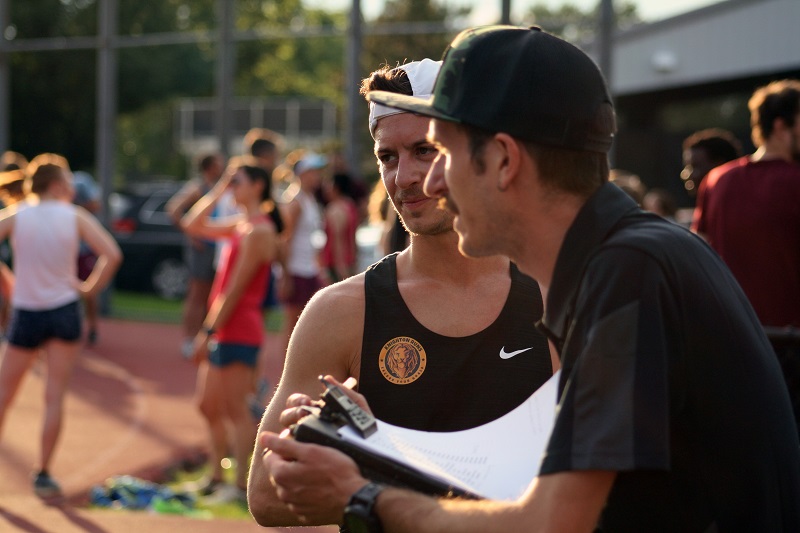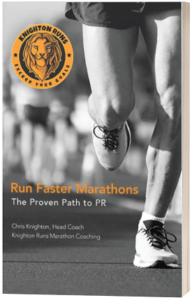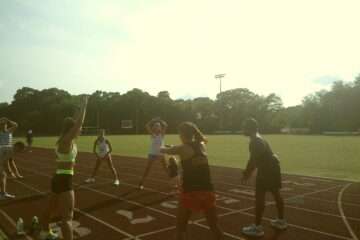The Most Important Running Track Measurements
Understand the most important features of indoor and outdoor running tracks.
By Coach Chris Knighton

Disclosure: This article may contain affiliate links. When you buy through links on our site, I may earn an affiliate commission. As an Amazon Associate, I earn from qualifying purchases.
Introduction to Running Track Measurements
What are the most important running track measurements?
Recently, I asked my audience what topics they were most interested in from my upcoming book, Ageless Track Star: How to Become a Masters Track Runner in Your 30’s, 40’s, or 50’s.
Many of you said you were brand new to track running and wanted to understand better how a track works.
In this post, I’ll teach you all you need to know to confidently take on your next track session.
What Are The Most Important Track Measurements?
1. Track Length
2. Lane Width
3. Curve Radius
4. Straightaway Length
Common Questions and Answers about Running Track Measurements
How long is an outdoor track?
The standard outdoor track is 400 meters in length when measured from lane 1.
Running in lane 2 of a standard outdoor track adds an extra distance of 7.67 meters compared to running in lane 1. Each lane further from the innermost lane adds a little more distance due to the curvature of the track.
How long is an indoor track?
Indoor tracks can vary in length, but the most common indoor track size is 200 meters when measured from lane 1. However, there are also indoor tracks that are 160 meters, 220 yards, or other lengths depending on the facility.
Running in lanes outside of lane 1 will add extra distance for each lap. Doing this is often preferable on small or tight indoor tracks.
How wide are the lanes on a track?
The width of each lane on the track is typically around 1.22 meters (4 feet) wide.
What is the radius of the curves on the track?
The radius of the curves on the track can vary. However, it is an important measurement for understanding the layout of the track and how to run the curves efficiently.
On some tracks the curves are “tighter” whereas on other tracks the curves are more “gradual”. More gradual curves are preferable for running fast, but generally this only matters much in sprint races, not distance.
How long is the straightway on the track?
The length of the straight sections of the track between the curves is important for pacing and strategy during races. Some tracks have straightaways as long as 100m. On other tracks with more gradual curves, the straight ways are significantly shorter.
It is challenging to pass another runner on a curve. Tracks with long straightaways allow for more opportunities to pass other runners.
Key Locations on The Track
The Starting Line: Knowing the exact location of the starting line is crucial for races to ensure accurate timing and distance measurements. The starting line is typically noted by a solid white line on the straightaway approaching one of the curves of the track. In front of the starting line are the lane numbers: 1, 2, 3, 4, 5, 6, etc.
The Line Marking “Half Way” Around: This is typically the 200m line for a 400m outdoor track, or the 100m line for a 200m indoor track. This line is noted by a solid white line on the diagonally-opposite curve from the starting line.
Miles vs. Meters
Running tracks are typically measured in meters. However, in some countries or contexts, track measurements may also be expressed in yards, feet, or other units.
Historically tracks in the USA were measured in imperial units.
Likewise, track events were traditionally measured in imperial units, including the mile run, 440-yard dash, 880-yard run, 2-mile, and 3-mile run
The conversion of track measurements in the USA from imperial units to metric units (meters) began in the late 1970s and was fully implemented by the early 1980s. This transition was part of a global effort to standardize track and field measurements to metric units for consistency in international competitions.
This has resulted in the modern slate of events being contested on the track all being listed in meters for their distance.
One exception to this is the “1-mile run” which is still commonly held at track meets in the USA and other countries that use the imperial units system. The mile is 1609.34 meters in length. Many tracks have the 1-mile starting point marked on the track, 9.34 meters behind the main starting line. To run a full mile on the track, you would run this 9.34 segment, followed by 4 complete 400m laps of the track all in lane 1.
The 1500m run is considered the standard “mile” distance in metric countries. There are calculators available online which can convert between a 1500m time and a 1-mile race time, for those who are interested.
While the standard outdoor track is 400m in length, some older tracks still in existence may be 440 yards (402.34 meters) or other distances in length. Therefore it is important to verify the distance of the track you use in training to ensure you are running the appropriate splits during your workouts.
Wrapping up…
I hope this gives you a bit more insight into how a running track is laid out, so that you can more confidently approach your next workout.
Did I miss something that you are still unsure about? Just email me to let me know and I’ll help you out!
Until next time… happy running!



